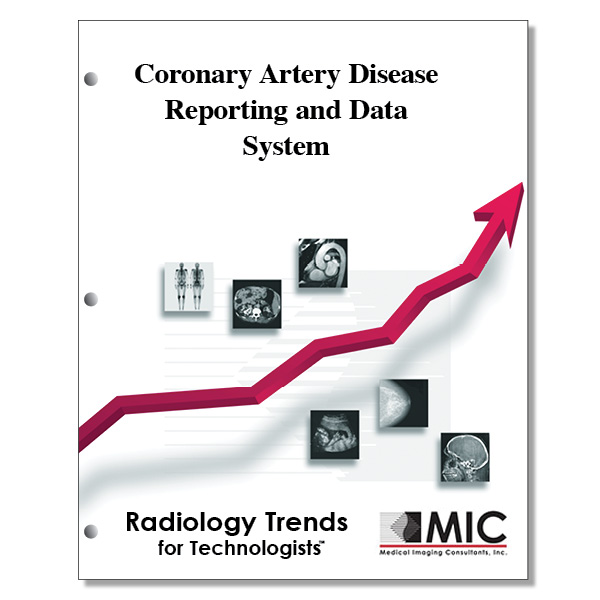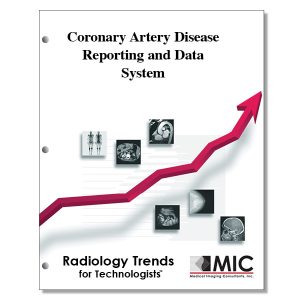

Coronary Artery Disease Reporting and Data System
The categories and modifiers of the coronary artery disease reporting and data system (CAD-RADS) are discussed.
Course ID: Q00626 Category: Radiology Trends for Technologists Modalities: Cardiac Interventional, CT3.0 |
Satisfaction Guarantee |
$34.00
- Targeted CE
- Outline
- Objectives
Targeted CE per ARRT’s Discipline, Category, and Subcategory classification:
[Note: Discipline-specific Targeted CE credits may be less than the total Category A credits approved for this course.]
Cardiac-Interventional Radiography: 1.50
Procedures: 1.50
Diagnostic and Conduction System Studies: 1.50
Computed Tomography: 1.50
Procedures: 1.50
Neck and Chest: 1.50
Registered Radiologist Assistant: 1.50
Procedures: 1.50
Thoracic Section: 1.50
Outline
- Introduction
- CAD-RADS Categories
- Modifiers
- Challenging Situations in CAD-RADS
- Scenario 1: Nonevaluable Segments at Coronary CT AngiographyóCategory N versus Modifier N
- Scenario 2: Significant Stenosis of the Left Main Coronary Artery
- Scenario 3: Two-Vessel Disease at CT Angiography
- Scenario 4: High-Grade Stenosis in Small Vessels
- Scenario 5: In-Stent Stenosis or Occlusion
- Scenario 6: Nonevaluable Stent
- Scenario 7: Severe Stenosis of a Graft
- Scenario 8: Graft with Occlusion, Stenosis, or Stent
- Scenario 9: Two High-Risk Features on Different Plaques
- Limitations of CAD-RADS Classification
- Scenario 10: Stent Complications
- Scenario 11: Volume of Plaque and Multiple Plaques
- Scenario 12: Coronary Artery Anomalies
- Scenario 13: Nonatherosclerotic Causes of CAD
- Scenario 14: Coronary Artery Ectasia and Aneurysm
- Scenario 15: Hemodynamic Significance of the Stenosis
- Scenario 16: Incidental Noncoronary Findings
- Current Status of CAD-RADS and Future Directions
- Conclusion
Objectives
Upon completion of this course, students will:
- know the societies that sponsored the CAD-RADS initiative
- understand the goads of the CAD-RADS
- know the information derived from coronary CTA that the CAD-RADS involves
- know the basis on which the CAD-RADS categories are assigned
- understand the CAD-RADS category N designation
- know the % at which a vessel is classified as obstructive CAD
- know the kind of stenosis represented by CAD-RADS categories 3, 4A, 4B, & 5
- know the diameter of coronary vessels evaluated by the CAD-RADS
- know why stenosis diameter is the measurement used in the CAD-RADS, even though stenosis area measurements may be more representative of luminal stenosis severity
- know some techniques for reducing calcium blooming artifacts on coronary CTA images
- know some techniques for improving CT image spatial resolution
- be familiar with CAD-RADS recommendations for stable chest pain patients
- be familiar with CAD-RADS recommendations for acute chest pain patients
- know when a CAD-RADS modifier N would be applied to a category
- know when a CAD-RADS modifier S would be applied to a category
- understand how coronary artery bypass grafts are graded or categorized by the CAD-RADS
- be familiar with the features of high-risk (vulnerable) atherosclerotic plaques that are highly associated with acute coronary syndrome
- know the most common causes of motion artifacts at coronary CTA
- know what is needed before a coronary CTA examination to minimize motion artifacts and decrease the possibility of non-evaluable segments
- understand why left main coronary artery stenosis is associated with higher mortality and morbidity rates
- know which revascularization technique for obstructive left main stenosis in symptomatic patients provides the best patient mortality rate
- understand the significance of severe stenosis in the LAD and LCX arteries in a left-dominant system
- know the basis of the CAD-RADS assigned category for patients with a coronary stent
- know what a CAD-RADS category 5 with a modifier S represents
- be familiar with coronary stent appearance and methods via coronary CTA
- know what can improve stent lumen evaluation accuracy at coronary CTA
- know the factors that might improve coronary CTA image quality by eliminating metallic artifacts
- know which coronary bypass vein grafts are more prone to atherosclerosis
- know what a CAD-RADS category 5 with modifier S/G represents
- understand how high-risk features of atherosclerotic plaque can be predictors of future events
- be familiar with various potential complications of coronary stents
- understand why plaque characterization and estimation of total plaque volume are essential components of coronary CTA interpretation
- be familiar with coronary anomalies and how they are reported with coronary CTA
- be familiar with the three broad mechanisms by which coronary arteries can be compromised by non-atherosclerotic disease
- understand why coronary CTA is the modality of choice for the evaluation of non-atherosclerotic causes of coronary artery narrowing
- understand and differentiate between the terms that can be associated with an enlargement of the coronary artery with a diameter of 1.5 times more than the normal diameter of the artery
- know what is indicated when a perfusion mismatch is present in stress/rest CT perfusion imaging
- know why the detection of hemodynamically significant stenosis is important
- be familiar with some advances in CT technology which allow for the evaluation of the hemodynamic significance of stenosis
- know the common sites for coronary CTA incidental findings
